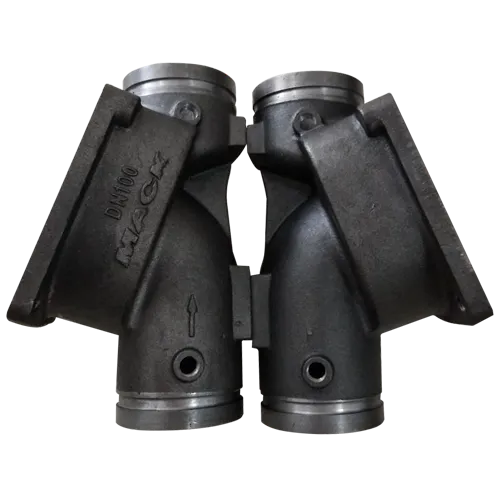Mobile:+86-311-808-126-83
Email:info@ydcastings.com
inlet exhaust manifold
Understanding the Inlet and Exhaust Manifold Key Components of Engine Performance
The internal combustion engine is a marvel of engineering, comprising various components that work in harmony to convert fuel into motion. Among these, the inlet and exhaust manifolds play a crucial role in the efficiency and performance of the engine. These manifolds are integral in managing the flow of air and exhaust gases, respectively, and their design and functionality can significantly influence engine performance.
What is an Inlet Manifold?
The inlet manifold, often referred to as the intake manifold, is responsible for distributing the air-fuel mixture to the engine's cylinders. Its primary role is to ensure that each cylinder receives an equal amount of the mixture for optimal combustion. Typically constructed from materials like aluminum or plastic for durability and weight savings, the design of the inlet manifold can vary widely depending on the engine's configuration and intended performance characteristics.
One of the manifold's key features is its plenum chamber, where the air-fuel mixture is collected before being sent to the cylinders. The shape and length of the runners (the passages that connect the plenum to each cylinder) can influence engine performance shorter runners can enhance high-end power by promoting rapid airflow, while longer runners can improve low-end torque by increasing airflow at lower speeds. Advanced designs may also incorporate features like variable intake geometry, allowing for dynamically adjustable runner lengths that optimize performance across a broader RPM range.
The Role of the Exhaust Manifold
Conversely, the exhaust manifold is responsible for channeling exhaust gases away from the engine after combustion. An efficient exhaust system is essential for reducing backpressure and improving engine efficiency. Typically made from cast iron or stainless steel due to their high-temperature resistance, the exhaust manifold collects gases from multiple cylinders and funnels them into the exhaust system.
inlet exhaust manifold

A well-designed exhaust manifold minimizes turbulence and maximizes the flow of exhaust gases. This is crucial because excessive backpressure can impede engine performance, reduce fuel efficiency, and potentially lead to higher emissions. Additionally, modern exhaust manifolds may incorporate turbocharger mounts, catalytic converters, and oxygen sensors, further intertwining the manifold's design with the engine's emissions control system.
Performance Implications
Both the inlet and exhaust manifolds have significant implications for an engine's performance characteristics. Tuning these components can lead to enhanced throttle response, improved fuel efficiency, and increased power output. For instance, aftermarket intake manifolds are often employed in performance applications, as they can provide a more direct route for the air-fuel mixture, reducing obstructions and improving flow rates.
Similarly, performance exhaust manifolds are designed to reduce weight, improve flow, and minimize backpressure, often leading to a notable increase in horsepower and torque. Additionally, heat management is crucial; materials that dissipate heat more effectively can improve exhaust gas flow and reduce engine temperatures, further enhancing performance.
Conclusion
In summary, the inlet and exhaust manifolds are vital components of an internal combustion engine, significantly influencing its performance, efficiency, and emissions. Understanding the roles and design aspects of these manifolds not only highlights their importance in engine mechanics but also emphasizes the potential benefits of tuning and optimizing these systems. As automotive technology continues to advance, the importance of improving manifold design to meet the demands for performance and sustainability becomes increasingly clear. Whether in daily driving or performance applications, the inlet and exhaust manifolds are critical to unleashing the full potential of any engine.
-
Why Should You Invest in Superior Pump Castings for Your Equipment?NewsJun.09,2025
-
Unlock Performance Potential with Stainless Impellers and Aluminum End CapsNewsJun.09,2025
-
Revolutionize Your Machinery with Superior Cast Iron and Aluminum ComponentsNewsJun.09,2025
-
Revolutionize Fluid Dynamics with Premium Pump ComponentsNewsJun.09,2025
-
Optimizing Industrial Systems with Essential Valve ComponentsNewsJun.09,2025
-
Elevate Grid Efficiency with High-Precision Power CastingsNewsJun.09,2025











